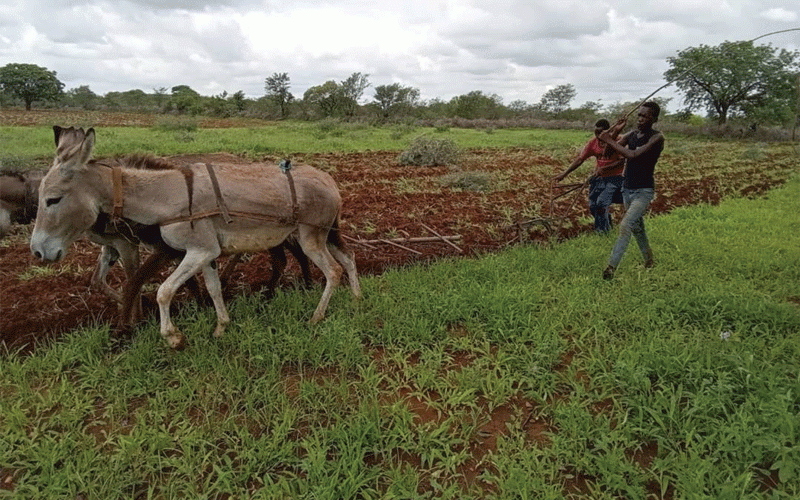
FARMERS in Matabeleland South province have descended on the fields, responding to the above average rains received in the province where 80% of the arable land has reportedly been cultivated as of last week.
However, most have resorted to zero or mechanical tillage after thousands of livestock succumbed to the effects of a punishing dry spell which preceded the current wet spell.
In an interview, Matabeleland South provincial Agritex officer Shupikai Sibanda said there was visible activity in the entire province following the wet spell which in some cases has been ongoing since December last year.
“Over 80% of cropping area of Matabeleland South is planted. The current rains are a relief since we are coming out of a distressing El Niño-induced drought.
“However, farmers are being urged to plant fodder crops like velvet bean and lablab and also sugar beans.
“It has been raining since December 22, 2024. I think it is too early to be saying about waterlogging because there are no reports as yet.”
Rural households in the Matabeleland region rely on rain-fed agriculture which is susceptible to climate change and variability.
The dry conditions had an adverse effect on the commencement of planting nationwide, resulting in a substantial decrease in the area planted and crop yields last year.
- Chief Nyangazonke reads riot act against corrupt village heads under his jurisdiction
- Zanu PF activists hijacks Govt‘s Pfumvudza programme
- News in depth: ‘It’s a grand heist’: Contractors, insurance firms fleece tobacco farmers
- Chief Nyangazonke reads riot act against corrupt village heads under his jurisdiction
Keep Reading
In addition, the dry conditions caused low livestock productivity and poor pastures which resulted in the death of livestock including donkeys ordinarily used for tilling.
Immense heat experienced in November last year affected livestock in most parts of the province where more than 10 000 cattle deaths were recorded.
The El Niño-induced drought hit Matabeleland South province the hardest leading to a high number of cattle deaths with 30% of the households in the province recording losses.
According to the 2024 Zimbabwe Livelihoods Assessment Committee Rural Livelihoods Assessment report on agriculture-related shocks, livestock deaths (20%) were the most reported.
The report said Matabeleland South (30%) had the highest proportion of households reports of livestock deaths, followed by Masvingo at 28% and Midlands at 27% with Mashonaland West as the least with 12% cattle deaths.
“We lost cattle and donkeys used as draught power and we are hiring tractors. Some farmers were able to look after their donkeys and we are hiring their spans to till the land and we hope the rains will be with us,” Lutendo Sibanda a farmer from Msane in Beitbridge West said.
“There is massive movement on the fields and villagers hope to recover from losses induced by the drought.”









